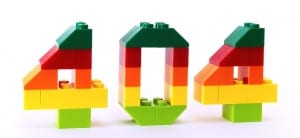Essential Elements Of A Business Website in 2021
StrategyDriven Insights Audio |
Early adopters of the internet will remember just how odd our early engagements with the web were. While there was increasing access to the web from the middle of the 1990s, Google didn’t arrive until 1998, and wasn’t in particularly widespread usage for a while after that. Often, as an early adopter, you would type in a URL from a piece of paper you’d scrawled it upon, and this would take you to a website with a background that made overly heavy use of graphics. It was probably a GeoCities effort, built by someone hoping to drive business by using the new, exciting World Wide Web.
How far we have come, when most businesses now have their own websites, and few of them are as migraine-inducingly messy as they used to be. Now, the issue is less one of wholesale changes, and more one of details. If you want your website to be all it can be now, it is a matter of finding a few tweaks here and there. However, those changes are still important, because everyone is on the internet these days, and a small change in the way your site works can give you a change in traffic that looks small – but which, in such a competitive atmosphere, can be monumental for your business. Such changes include the following:
Hooking the viewer within the first few seconds
There is something to be gained by remembering the eyesore websites of the mid-1990s when you are designing a website for the present day. One of the issues with early websites is that there was simply too much going on, and it wasn’t very well organised. The chances of someone staying for long on a website that does that today are next to none. If you want someone to stick around on your site, then the first thing they see needs to be clean, uncluttered and at the same time somehow informative.
Ideally, the home page will operate as a menu in the first instance. From here you should be able to navigate to anywhere else on the site within two clicks, and it should be easy to see how you do that. Here is not where you use a lot of pictures, text or graphics, because that can be visually off-putting, and the one rule of a decent home page is to not give anyone a reason to click away to something else right away. All you need on the first view of your site is a navigation menu, and potentially the basics of some content – if your site is an online store, perhaps have a banner that takes visitors straight to some of your most popular products or ranges. Nothing flashier than that, though – don’t overwhelm anyone.
Getting the ideal Content Management System in place
Continuing the theme of how different the internet was a couple of decades ago, it’s worth remembering that the websites back then were designed and often coded by people who put a lot of time into teaching themselves the tricks. While there were some drag-and-drop options that allowed you to build at least a home page, making a website was a labor of love – much though that may surprise a few people.
In the present day, it is easier than ever for someone with no real coding experience to create a website themselves. It’s still not necessarily always a good idea, but it is easier, and the range of options that we have for making it work is greater than ever. The level of choice we have is impressive, but you have to make sure that for you it is a blessing rather than a curse. Modern content management systems offer you the chance to radically change the look of your site and what it offers – but they can quickly become confusing if you try to do too much. Ensure you’re using a CMS that is easy to work with – because quite apart from anything, if something goes wrong and knocks your website offline, you want to be able to fix it without having to dig around for the fault.
Content is still king
A website is your own corner of the internet that allows people to learn about your business, communicate with you and maybe make a purchase or two. When people land on your website with the intention of engaging, there is a truth you need to recognize: they could, with a change of luck, have landed with any of your competitors. And if you don’t give them a user experience worthy of the name, there is still a very good chance that they will find your competitors after navigating away. You need to keep them interested with useful content, which takes time to create.
You’ll hear it said of website creation that “content is king”, and that’s an undeniably true statement. An attractive website with bad content is probably worth less than a garish website with good content, because if you can get past the visual assault at least you can enjoy reading the latter, and you’ll come back to it. If a website bores you, you’ll navigate away and not have a reason to come back. This is why website creators, or SEO agencies should focus on user engagement primarily. It could be informative blog posts, relevant video content or useful widgets, but you need to make sure your site hosts items your target customers want to see.
This rule might sound obvious, but it’s surprising how often you’ll find a site that includes broken links, features red Xs where you should be seeing pictures, or just seems to have gone wrong somehow. This website is, as we have noted, your little corner of the internet, and it is more or less constantly receiving visitors (if the SEO basics have been done right, anyway). Now, if your home was repeatedly hosting visitors, most of them strangers to you up to now, would you feel comfortable if the carpets hadn’t been hoovered, or one of your chairs was upside down? Of course not, but it’s all too easy for the digital equivalent of this to damage things for you.
A regular audit of your site, picking up on and removing broken links and images, will make the site work faster and look better. Perhaps more importantly than either of these points, it will likely ensure that your visitors are more likely to return – and when they do, they’re likely to have brought money with them. If the broken links and images are in blog posts they will usually be very simple to remove, but remember that if they are generated by the CMS backend that they may take a lot more work to either fix or remove. Also, once removed, you need to make sure that they don’t leave a glaring empty space.
Old broken links and missing pictures have much the same effect for your site that boarded-up windows would for a brick-and-mortar store – you might be open for business, but it won’t look that way.
Your “About us” page isn’t just filler
If you’ve ever used WordPress or Joomla or a similar CMS, then you’ll be used to the presence of an “About us/me/the author” section in the backend of the system. It is possible to delete this from your site, and some people choose to do so thinking that it is an unnecessary addition to the bandwidth the site will need to use. They are mistaken.
The About Us section is where people will go if they are looking out for information that isn’t immediately obvious from the rest of the site. You can include an FAQ here, but of primary importance is that you set out some information about your company. When was it founded, how many people work for you, where are you based? All of these will be useful information for someone looking to learn more about you and potentially become a customer.
Equally, this is the chance to lay out something of a mission statement, or at least lay out certain policies that your business has. If you are selling cosmetics, for example, you can include in the “About us” statement that you only handle products that are cruelty-free. If you sell coffee, you can make clear here that all of your coffees are grown under Fair Trade rules. In a market that is increasingly concerned with living up to strict ethics, this is the kind of thing that people are going to want to know – and including it in the About Us section also makes you more likely to show up when people search for “fair trade coffee” or “cruelty-free cosmetics”.
We’ve come a long way in 25 years when it comes to website building. If it sometimes feels like we have a lot further to go, it’s because the internet is so powerful it can allow us to create wonderful things. It’s worth taking the time to ensure your website has everything it needs to succeed, because the results are worth the work.














Leave a Reply
Want to join the discussion?Feel free to contribute!